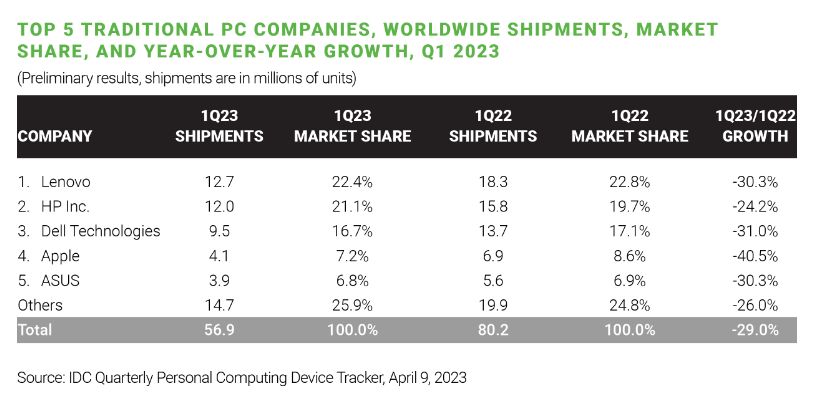During the pandemic, laptop demand skyrocketed as employees needed the devices to work from home en masse. However, chip shortages exacerbated demand issues and factory closures around the world complicated supply chains.
In 2023 the WHO and other government agencies declared the pandemic officially over, but now new dynamics are at play for PC makers. Laptop demand has plummeted (see chart below) and many companies are laying off workers to reduce costs.
We believe PC-as-a-Service (PCaaS) could be a solution that PC makers can use to save themselves from this slowing demand while offering better value to buyers.

PC-as-a-Service (PCaaS) has three major benefits to buyers:
Cost management
From a cash flow and cost management standpoint, two advantages of "as-a-service" offerings are 1.) the ability to scale up and down the subscriptions on the go and 2.) no requirement of a large up-front capital investment. Firms in various sectors that are adjusting workforce numbers may benefit from scaling down their number of devices as workers leave. Furthermore, as hiring picks up when the economy is humming, companies can acquire new devices quickly without providing significant capital outlay.
Software bundles
One of the main differences between PCaaS and traditional leasing models is that PCaaS generally comes with software bundles. This software is expected to provide value on deployment, security, and device management. For example, Dell offers VMware Workspace ONE as part of its PCaaS package. This allows companies to manage devices "over-the-air" and save time and costs.
Support that complements hybrid workforces
AnothercomponentofPCaaSthat can be valuable to firms isasupport system thatcomplementshybrid work culture. Leading PC makers have largerteams ofnetworkspecialists andtechnicians than traditionalcorporateIT teams at any onecompany. With thePCaaSmodel, workers can request support and have PC techniciansservice their devicesdigitally rather thantraveling to an office.
A savior?
Given the current PC market dynamics, this may be the right time for corporate PC buyers to evaluate a PCaaS model for their organization and take advantage of the value proposition. Meanwhile, PC makers have an opportunity to structure a solution that 1.) addresses the current needs of their corporate customers and 2.) increases adoption of a model that over the long term will provide richer margins and a consistent monthly revenue stream.
By focusing on the challenges customers face, both PC makers and buyers can come away on top.
The content of this article is intended to provide a general guide to the subject matter. Specialist advice should be sought about your specific circumstances.



